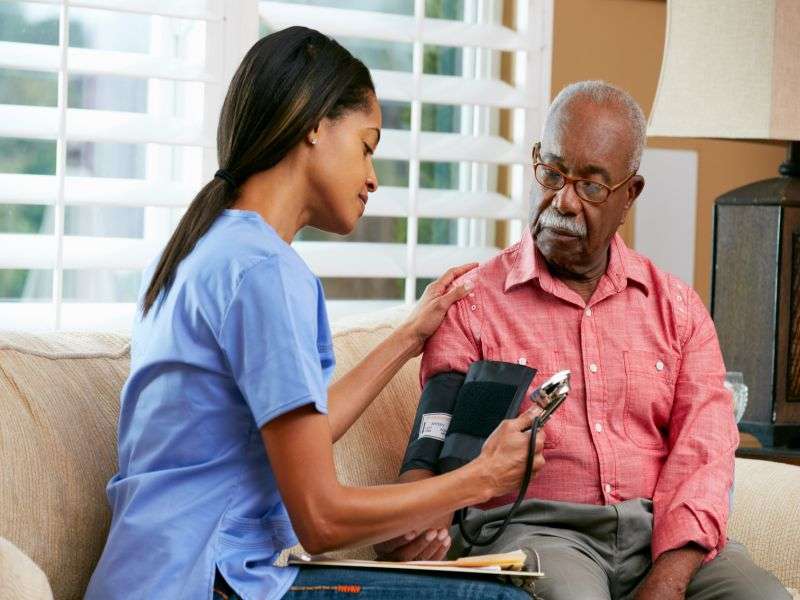Blacks, elderly missing from U.S. cancer clinical trials

(HealthDay)—Four out of five participants in cancer clinical trials are white, a discrepancy that calls into question whether other races and ethnicities are receiving good cancer treatment, researchers say.
Women and the elderly also are underrepresented in clinical trials, according to the new findings.
Prior studies have shown that the effectiveness of cancer treatment can vary based on a person's race, gender and age, said lead researcher Dr. Narjust Duma.
Despite this, clinical trials have failed to successfully recruit a diverse patient population upon whom to test new drugs and therapies, said Duma, a hematology/oncology fellow at the Mayo Clinic, in Rochester, Minn.
"All the data we're using to guide cancer treatment is for one type of patient," she said.
Duma undertook this study after a conversation with a black lung cancer patient about possible chemotherapy treatments.
"He asked, 'Where are the numbers about me?'" Duma recalled. "Where are the numbers about African-Americans? What are the chances we respond to treatment?"
A cursory look at chemotherapy research revealed that only a handful of blacks had been included in clinical trials involving hundreds of people, Duma said.
To explore the issue further, Duma and her colleagues analyzed enrollment data from all U.S. cancer therapy trials completed between 2003 and 2016, winding up with more than 55,000 participants.
Of those patients, 83 percent were white, 6 percent were black, just over 5 percent were Asian, almost 3 percent were Hispanic, and around 2 percent were classified as "other," researchers found.
The Hispanic numbers are particularly troubling, given that they currently make up 16 percent to 20 percent of the U.S. population and that proportion is increasing, Duma said.
"That's one-third of the U.S. population, and we have close to zero information about how to treat cancer in those patients," Duma said.
Researchers also found that only 36 percent of patients were aged 65 and older, even though cancer risk increases dramatically with age.
Finally, women were underrepresented in clinical trials for melanoma (just 35 percent), lung cancer (39 percent), and pancreatic cancer (40 percent).
Not including these folks in clinical trials means that doctors are not fully equipped to treat all the various types of cancer that can strike different groups, said Dr. Christopher Li, a research professor of epidemiology with Fred Hutchinson Cancer Research Center in Seattle.
"If these populations are underrepresented in clinical trials, there will also be an underrepresentation of the types of cancer that we know disproportionately affect them," Li said. For example, black and Hispanic women are much more likely to be diagnosed with aggressive breast cancer.
"Therefore, we will have less knowledge around the effectiveness of treatment that might be specific for these different forms of the disease," Li continued.
Duma said research already has revealed some differences:
- Blacks appear to metabolize some chemotherapy drugs more quickly, meaning they might need larger doses than other groups.
- The female hormone estrogen plays a significant role in how well tumors respond to cancer drugs.
- Elderly patients are more likely to suffer crippling side effects from their cancer treatment, and rebound from them less easily.
America's history of unethical experimentation on minority groups prompts many to avoid participation in clinical trials, particularly blacks, Duma and Li said.
They cited the Tuskegee Study, started in 1932, in which black men were denied treatment for syphilis over four decades so researchers could observe the long-term effects of the venereal disease.
"Our country is still living with the legacy of things like Tuskegee," Li said. Fears associated with being involved in research keep certain people from participating in clinical trials, he noted.
To overcome these concerns, the leaders of clinical trials need to provide more access to their studies through community-based hospitals, rather than the collegiate research hospitals where most trials are conducted, Li said.
Researchers also should recruit spokespeople from various racial and ethnic groups "who have participated in research trials who can talk with other members of their community in ways they can trust," Li added.
Duma said clinical trials could provide more support to elderly participants—perhaps helping them keep their medications organized and providing money to those living on a fixed income.
And medical journals can help promote diversity by refusing to publish trials unless researchers provide tables indicating the race, age and sex of all participants, along with any reasons why certain groups are underrepresented, Duma said.
The findings were presented Monday at an American Association for Cancer Research meeting, in Atlanta. Until published in a peer-reviewed medical journal, research presented at meetings is usually considered preliminary.
More information: Narjust Duma, M.D., hematology/oncology fellow, Mayo Clinic, Rochester, Minn.; Christopher Li, M.D., Ph.D., MPH, research professor, epidemiology, Fred Hutchinson Cancer Research Center, Seattle; presentation, Sept. 25, 2017, American Association for Cancer Research meeting, Atlanta
For more on clinical trials, visit the U.S. National Cancer Institute.
Copyright © 2017 HealthDay. All rights reserved.














